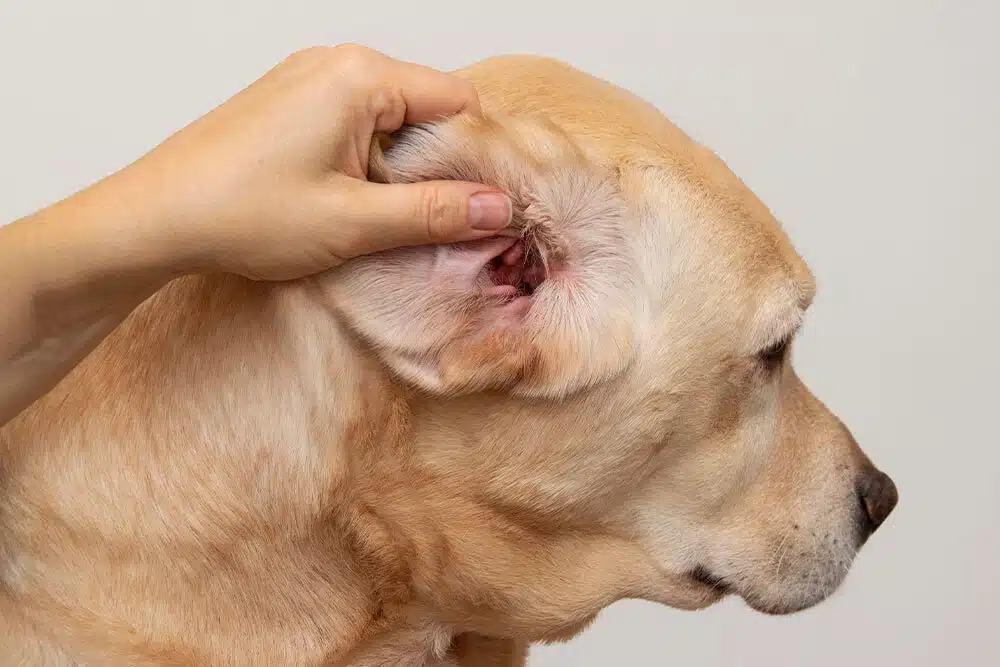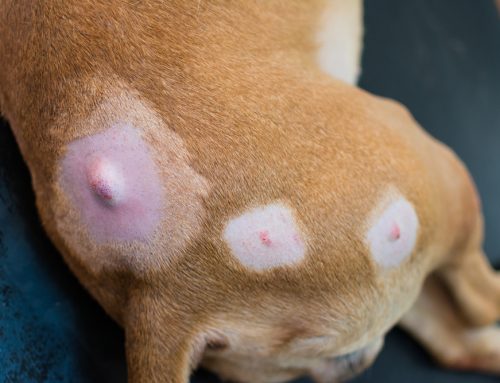Ear infections are among the most common health issues seen in dogs. While they can start as a minor irritation, left untreated, they can lead to chronic pain, permanent hearing loss, or even the need for surgery.
At Woodland Springs Veterinary Hospital in Fort Worth, Texas, we specialize in diagnosing and treating ear infections in dogs. This guide is designed to help pet owners understand what causes these infections, how to spot them early, and what you can do to prevent future flare-ups.
What Causes Ear Infections in Dogs?
Otitis externa—inflammation of the outer ear canal—is the most frequent type of ear infection in dogs. Several common contributors include:
Bacterial Infections
Staphylococcus and Pseudomonas bacteria thrive in warm, moist environments—especially in dogs with floppy ears or frequent swimmers.
Fungal Infections
Yeast overgrowth, often Malassezia, leads to itchiness, redness, odor, and dark discharge. These infections often occur secondary to allergies or moisture retention.
Parasites
Ear mites, more common in puppies, can trigger inflammation and secondary bacterial or fungal infections. Fleas and ticks may also irritate the ears and skin.
Allergies
Both environmental and food allergies can cause chronic inflammation of the ears, making dogs more vulnerable to infection.
Breed-Specific Anatomy
Dogs with pendulous ears or excess hair in the ear canal—like Cocker Spaniels, Golden Retrievers, and Poodles—are more prone to infections due to reduced airflow and increased humidity.
Foreign Bodies
Foxtails, grass seeds, or other plant material can get lodged in the ear and cause irritation or infection.
More on foxtail dangers from UC Davis
Recognizing the Signs of an Ear Infection
Early intervention is crucial. Watch for:
- Head shaking or constant scratching at the ears
- Redness, swelling, or heat in or around the ear
- Foul-smelling discharge (brown, yellow, or bloody)
- Sensitivity when ears are touched
- Crusting or scabbing on the ear flap
- Tilting the head to one side
If your dog is showing any of these signs, schedule a veterinary exam as soon as possible.
See how to examine and medicate the ears of a dog (WSU Veterinary Hospital)
Veterinary Diagnosis: Getting to the Root of the Problem
At Woodland Springs, we use a combination of diagnostics to identify the cause of your dog’s ear infection:
1. Physical Examination
We inspect the outer and inner ear with an otoscope, checking for foreign bodies, discharge, swelling, or tumors.
2. Microscopic Swabs (Cytology)
Samples from the ear are evaluated under a microscope to identify bacteria, yeast, or parasites.
3. Culture and Sensitivity Testing
For chronic or resistant infections, we may submit samples to identify the exact bacteria and best antibiotic treatment.
4. Imaging or Advanced Diagnostics
If middle ear infection (otitis media) or polyps are suspected, X-rays or advanced imaging may be needed.
Learn more about ear tumors in dogs (Merck Veterinary Manual)
Effective Treatments for Dog Ear Infections
Treatment depends on the infection type and severity:
Medications
- Antibiotic drops for bacterial infections
- Antifungal drops for yeast
- Steroids or anti-inflammatories to reduce pain and swelling
- Oral medications for deeper or systemic infections
In-Clinic Cleaning and Debridement
Ear flushing removes debris and allows medications to penetrate effectively. This may require sedation if your dog is in significant discomfort.
Surgical Options
For chronic infections that don’t respond to medical management, Total Ear Canal Ablation (TECA) may be considered. This procedure removes the diseased ear canal to eliminate pain and infection.
More about TECA surgery (NDSR UK)
How to Prevent Recurring Ear Infections
Prevention is easier than repeated treatment. Here’s how:
Routine Ear Cleaning
Use a vet-recommended cleaner and avoid cotton swabs. Ask your veterinarian for a cleaning schedule customized to your dog.
Detailed cleaning guide from Cornell
Drying Ears After Water Exposure
After baths or swimming, dry your dog’s ears thoroughly to prevent moisture buildup.
Treat Allergies Proactively
Managing environmental or food allergies helps reduce chronic inflammation that can trigger ear infections.
Dog allergies: symptoms & treatment (AKC)
Food allergies in dogs: how an elimination trial helps (DVM360)
Parasite Control
Year-round protection against fleas, ticks, and mites is essential—especially in warmer climates like Texas.
Proper Nutrition
Omega-3s and a balanced diet support skin and ear health.
Nutrition’s role in dermatitis and itchy pets (OVC Pet Nutrition)
Regular Veterinary Visits
Routine check-ups help us detect subtle changes and address them early.
What About Hematomas?
Sometimes, excessive scratching or head shaking can cause blood to pool in the ear flap—known as an aural hematoma.
Learn more about ear hematomas (AKC)
Prompt treatment is important to prevent permanent deformity or infection.
Chronic Infections: When It’s More Than Just an Earache
If your dog suffers from frequent ear infections, we’ll work with you to identify and manage long-term contributors:
- Allergy testing or elimination diet trials
- Maintenance ear cleanings
- Topical or oral anti-inflammatories
- Ongoing parasite control and diet adjustments
- Referrals for surgical evaluation in severe cases
When to Call the Vet
Don’t delay treatment if your dog:
- Shows signs of pain, head tilt, or balance issues
- Has recurring ear infections
- Stops responding to previous treatments
- Develops thickened ear canals or persistent discharge

Prompt care prevents irreversible ear damage and keeps your dog comfortable.
Your Partner in Canine Ear Health
Ear infections may be common, but they’re not something you or your dog have to live with. At Woodland Springs Veterinary Hospital, we’re here to support you with advanced diagnostics, compassionate care, and proven prevention strategies.
Contact our team to help your dog stay healthy, happy, and ear-infection-free.







Leave A Comment